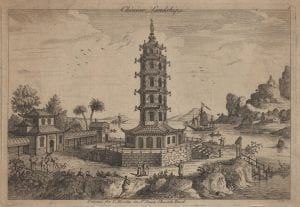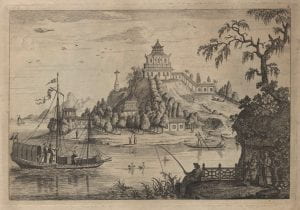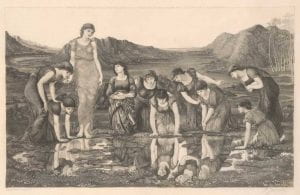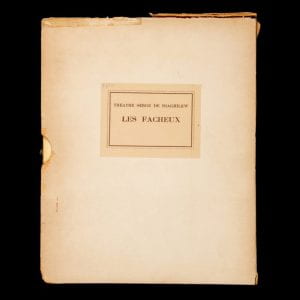The story of Harmonillus, a lemon-fingered boy

Continue reading “The story of Harmonillus, a lemon-fingered boy”
Discoveries, reflections and news from across our collections of Rare Books, Prints, Rare Music, East Asian and Map Collections and the University of Melbourne Archives.

Continue reading “The story of Harmonillus, a lemon-fingered boy” →


Occasionally, works of art in the Baillieu Library Print Collection will remain mysteries even after a bit of research, such as this series of five Chinese landscapes. I can say with some certainty that the artist was German/English painter Augustin Heckel, and the engraver was Englishman John June, and they were probably created around 1750-60. While the publisher, Thomas Bowles of London, published a number of compendiums of Chinese prints, what editions these landscapes were published in and where and what exactly they depict remains uncertain.
Continue reading “Chinoiserie: designs of the East and West” →

If this engraving appears familiar, albeit here in less colourful tones, that is due to it being a reproduction of Pre-Raphaelite artist Edward Burne-Jones’ painting of the same name from 1877. Far from a case of egregious artistic plagiarism, from the 17th-century onwards it was commonplace for engravings to be created based on popular paintings. As today one might visit an exhibit at a gallery and purchase a poster in the gift shop in lieu of owning a priceless original painting itself, reproductions made in print allowed a larger and more wide-spread audience to access and own works of art. Inscriptions in Latin on the edge of an engraving spoke to who had what role in the production of a print; an artist invenit (invented) the work, before an engraver sculpsit (engraved) the plate, and a publisher divulgavit (published) and distributed it (195).
The Baillieu Library’s Rare Music Collection has recently welcomed an exciting new addition. This work comprises two volumes, as part of a limited edition of five hundred, and was dedicated to a Ballets Russes performance of Les Fâcheux at Paris’ Théâtre de Monte Carlo in 1924. This performance was based on a three-part comedy of Molière’s, with music by Georges Auric, choreography by Bronislava Nijinska, along with costume and set design by Georges Braque.

Continue reading “Going to the ballet—A new addition to the Rare Music Collection” →

This map, titled Karte von der Inselwelt Polynesien oder dem fünften Welttheile: nach Djurberg und Roberts, or Map of the islands of Polynesia or the fifth part of the world: after Djurberg and Roberts is a 1795 map by Austrian cartographer Franz Johann Joseph von Reilly in the University’s rare and historical map collection.
Continue reading “Ulimaroa: a name of curious origin on early maps of Australia” →
Number of posts found: 403
Completely spam free, opt out any time.
Please, insert a valid email.
Thank you, your email will be added to the mailing list once you click on the link in the confirmation email.
Spam protection has stopped this request. Please contact site owner for help.
This form is protected by reCAPTCHA and the Google Privacy Policy and Terms of Service apply.
